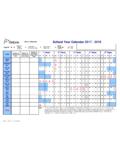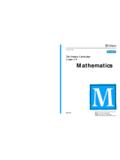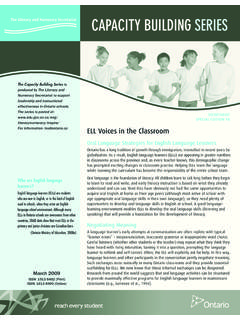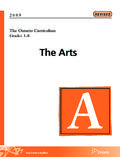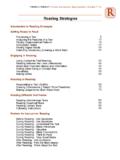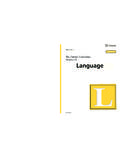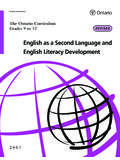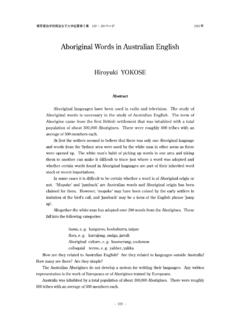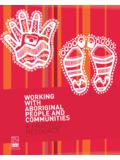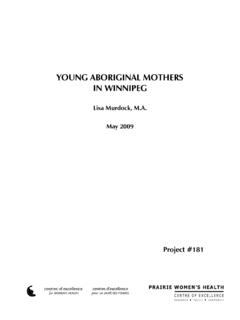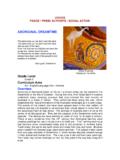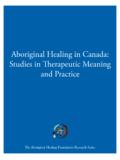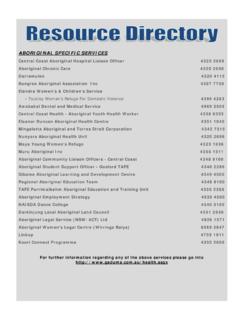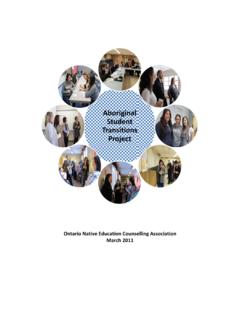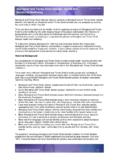Transcription of Canadian and World Studies History Cultural and …
1 History , Grade 10: Cultural and historical contributions 1 Canadian and World Studies History Cultural and historical contributions Students identify aspects of everyday Canadian life that are aboriginal in origin, and explore key contributions such as aboriginal Canadians role in the two World wars. Related Curriculum Policy The Ontario Curriculum, Grades 9 and 10: Canadian and World Studies , 2005 Strand Communities: Local, National, and Global Specific Expectations Forces Shaping Canada s Policies and Canadian Identity identify the contributions made by selected regional, provincial, linguistic, ethnic, and/or religious communities to Canada s multicultural society ( , Atlantic Canada, Quebec, Franco- Ontarians, aboriginal nations, M tis, Inuit, Black Canadians, local immigrant groups, Doukhobours, Hutterites, Mennonites)
2 Canada s Participation in War, Peace, and Security describe some of the contributions Canada and Canadians made to the war effort overseas during World War I and World War II ( , Ypres, Vimy Ridge, Hong Kong, the Battle of the Atlantic, Dieppe, Ortona, D-Day; contributions of individuals, such as Billy Bishop; contributions of groups, such as aboriginal peoples; liberation of the Netherlands; convoys; liberation of prisoners from Nazi concentration/death camps) aboriginal Context aboriginal peoples have contributed much to the Canadian mosaic. The contributions of aboriginal Canadians, however, have become integrated to such an extent that we forget that the origins of such everyday things as maple syrup, mukluks, and the canoe are aboriginal .
3 08-302 / ISBN 978-1-4249-8729-0 (PDF) / Queen's Printer for Ontario, 2009 / Une publication quivalente est disponible en fran ais. History , Grade 10: Cultural and historical contributions 2 Despite stereotypes in popular culture, aboriginal people are not all the same. Living in every province and territory in Canada, they are as different as their languages and geographic locations would suggest. During World War I and World War II, thousands of aboriginal Canadians voluntarily enlisted in the Canadian military. Many travelled from remote locations, including the Arctic, to enlist. The stories of their quests to enlist are in themselves stories of great courage.
4 Teaching Strategies Have students visit the Atlas of Canada website to determine how many different aboriginal languages and language groups there are in Canada. Have students research Canada s aboriginal peoples and determine what contributions they have made to Canada ( , the canoe, the kayak, corn, maple syrup). Have students visit the Veterans Canada website and review aboriginal Canadian contributions to World War I and World War II. Discuss the personal accounts of individuals who travelled from all parts of Canada to enlist. Adapt these teaching strategies to explore the contributions of other groups in Canada.
5 Resources The following recommended resources and web links were accurate at the time of publication. Teachers are encouraged to check that these reference listings remain current. Atlas of Canada. aboriginal Languages by Community,1996. Map of the languages of Canada s aboriginal peoples. Veterans Affairs Canada. Native Soldiers Foreign Battlefields. Describes the contributions of Native people to Canada s participation in wars in the twentieth century. Making Community Connections Invite a local Elder who speaks an aboriginal language to the classroom to discuss the language and the aboriginal community s use of it.
6 Ask if he or she speaks more than one aboriginal language and, if so, why. Also ask whether it is beneficial to speak more than one aboriginal language and, if so, in what way. Invite an aboriginal veteran from a local legion branch or neighbouring First Nation community to the class to share some experiences of World War II ( , the impact, including benefits; the reason for participating in the war). ABOUT THE TEACHER S TOOLKIT This teaching strategy is one component of aboriginal Perspectives: The Teacher s Toolkit, a collection of resources designed to help Ontario educators bring aboriginal perspectives into the classroom.
7 Based on the revised Ontario curriculum, the collection includes resources for educators at both the elementary and secondary levels. Other resources in this series can be found on the ministry website, at
